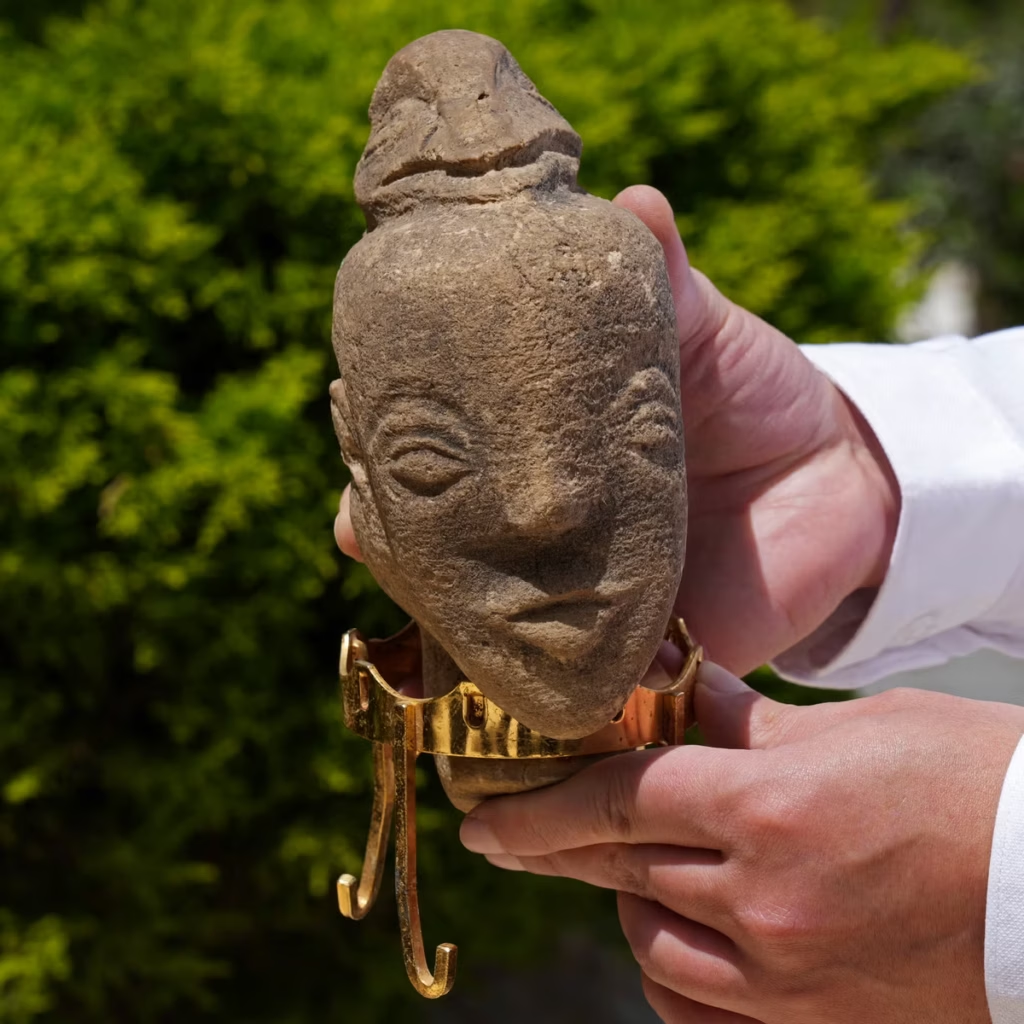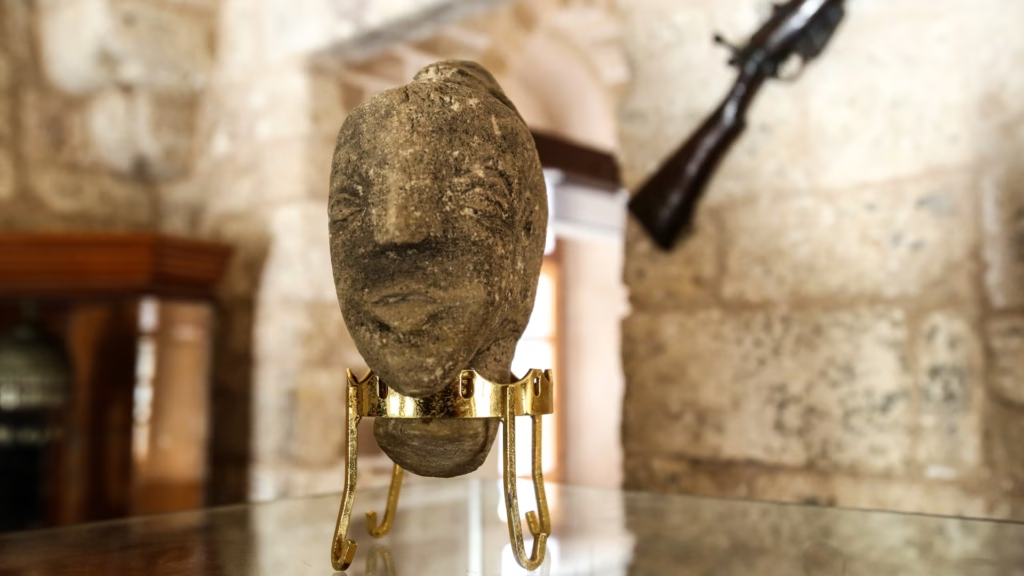In 2022, a farmer plowing his field in the Khan Younis area of the Gaza Strip discovered a limestone statue head approximately 22 cm tall. After cleaning, experts noted that this piece dates back about 4,500 years to the Late Bronze Age. This artifact was identified as a rare depiction of Anat, the goddess of war, love, and fertility, an important figure in the Canaanite civilization.
The most striking feature of the statue head is the snake-shaped crown on its forehead. Archaeologists believe this symbol represents the goddess’s dual powers of protection and destruction. Anat is known in Mesopotamian and Levantine mythology as a warrior and fertility goddess, widely worshipped especially in the Canaan region.

Jamal Abu Rida, Director of the Gaza Ministry of Tourism and Antiquities, stated, “Anat was the embodiment of love, beauty, and the benevolence of war in Canaanite mythology.“
Ancient texts describe Anat as a powerful and multifaceted goddess. Often mentioned alongside her brother Baal, she holds a significant place in the region’s mythological framework with her roles as both protector and fertility deity. Anat’s dual nature reflects the cycles of nature and the belief systems of ancient societies.

This discovery sheds light on the region’s rich cultural heritage and provides important clues about the mythological interactions between Anatolia and the Levant civilizations. The statue is currently preserved and displayed at the Qasr al-Basha Museum.





